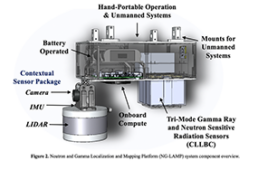Vanadium dioxide crystal lattice (A. Julia Stähler / Fritz Haber Institute) |
An
international team of physicists has developed a method for taking
ultrafast “sonograms” that can track the structural changes that take
place within solid materials in trillionth-of-a-second intervals as they
go through an important physical process called a phase transition.
Common
phase transitions include the melting of candle wax before it burns and
dissolving sugar in water. They are purely structural changes that
produce dramatic changes in a material’s physical properties and they
play a critical role both in nature and in industrial processes ranging
from steel making to chip fabrication.
The
researchers have applied this method to shed new light on the manner in
which vanadium dioxide, the material that undergoes the fastest phase
transition known, shifts between its transparent and reflective phases.
Many
of these transitions, like that in vanadium dioxide, take place so
rapidly that scientists have had difficulty catching them in the act.
“This means that there is a lot that we still don’t know about the
dynamics of these critical processes,” said Professor of Physics Richard
Haglund, who directed the team of Vanderbilt researchers who were
involved.
To
build a more complete picture of this phenomenon in vanadium dioxide
(VO2), one of the most unusual phase-change materials known, Vanderbilt
researchers collaborated with physicists at the Fritz Haber Institute of
the Max Planck Society in Berlin, who have developed the powerful new
technique for obtaining a more complete picture of ultrafast phase
changes. Details of the method, which can track the structural changes
that take place within materials at intervals of less than a trillionth
of a second, are reported in the Mar. 6 issue of the journal Nature Communications.
New details on nature’s quickest phase-change artist
Vanadium
dioxide shifts from a transparent, semiconducting phase to a
reflective, metallic phase in the time it takes a beam of light to
travel a tenth of a millimeter. This phase change can be caused by
heating the material above 150 F (65 C)
or by hitting it with a pulse of laser light.
VO2
is one of a class of materials now being considered for use in faster
computer memory. When mixed with suitable additives, it makes a window
coating that blocks infrared transmission on hot days and reduces heat
loss during cool periods. In addition, it has potential applications in
optical shutters, sensors and cameras.
“With
this new technique, we were able to see a lot of details that we’ve
never seen before,” said Haglund. These details include how the
electrons in the material rearrange first and then are followed by the
movement of the much more massive atoms as the material shifts from its
semiconductor to metallic-phase orientation. These details provide new
information that can be used to design high-speed optical switches using
this unique material.
Laser-based method tracks phase changes in ultra-short intervals
The
new method is a variation on a standard method known as
‘pump-and-probe.’ It uses an infrared laser that can produce powerful
pulses of light that only last for femtoseconds (millionths of a
trillionth of a second). When these pump pulses strike the surface of
the target material, they generate high-frequency atomic vibrations
determined by the material’s composition and phase. These vibrations
change during a phase transition so they can be used to identify and
track the transition in time.
At
the same time, the physicists split off a small fraction of the
infrared beam (the probe), convert it into white light and use it to
illuminate the surface of the target. It turns out that these lattice
vibrations produce changes in the material’s surface reflectivity. As a
result, the physicists can track what is happening inside the material
by mapping the changes taking place on its surface.
The
situation is analogous to hitting a gong with thousands of tiny
microscopic hammers. The sound each hammer makes depends on the
composition and arrangement of the atoms in the part of the gong where
it hits. If the composition and arrangement of the atoms changes in one
of these areas, then the sound the hammer makes also changes.
“The
real power of this technique is that it is sensitive to atomic changes
inside the material which are usually observed using expensive
large-scale X-ray sources. Now we can do the experiment optically and in
the lab on a tabletop,” said Simon Wall, an Alexander von Humbolt
fellow at the Fritz Haber Institute.
Vanderbilt
graduate students Kannatassen Appavoo and Joyeeta Nag fabricated and
characterized the vanadium dioxide thin films; Simon Wall, Daniel
Wegkamp, Laura Foglia, Julia Stähler and Martin Wolf at the Fritz Haber
Institute directed the laser experiments and subsequent data analysis.
The project was funded by grants from the Alexander von Humboldt Foundation and the National Science Foundation.
Ultrafast changes in lattice symmetry probed by coherent phonons






